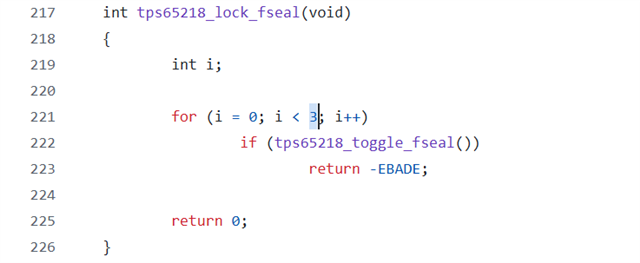Other Parts Discussed in Thread: TPS65218
Tool/software:
Using SDK9 with AM3351 and TPS65218D0PHP, how do I set the PMIC FSEAL bit using the TI-written driver?
*** 7/25/25: I'm updating this post to include my colleague's description from below. Since we've not seen a response from TI yet, I'm adding this to the original post to be sure the problem statement is clear:
Specifically, we're using the TPS65218 driver. We found the function "tps65218_lock_fseal()" in pmic_tps65218.c, but it's not clear to us how we're intended to invoke it; it doesn't appear to be called from elsewhere in the driver, and it doesn't seem to be exposed to an ioctl or similar. Is there any guidance as to how this is supposed to be used? In case it's relevant, our product mainly runs as a user-space application under Linux, but we're comfortable with rebuilding the kernel if necessary.
Summary: Is there any knowledge of the function "tps65218_lock_fseal()" in pmic_tps65218.c?? Does it work? How is it invoked?
Thanks in advance for any help on this matter.


